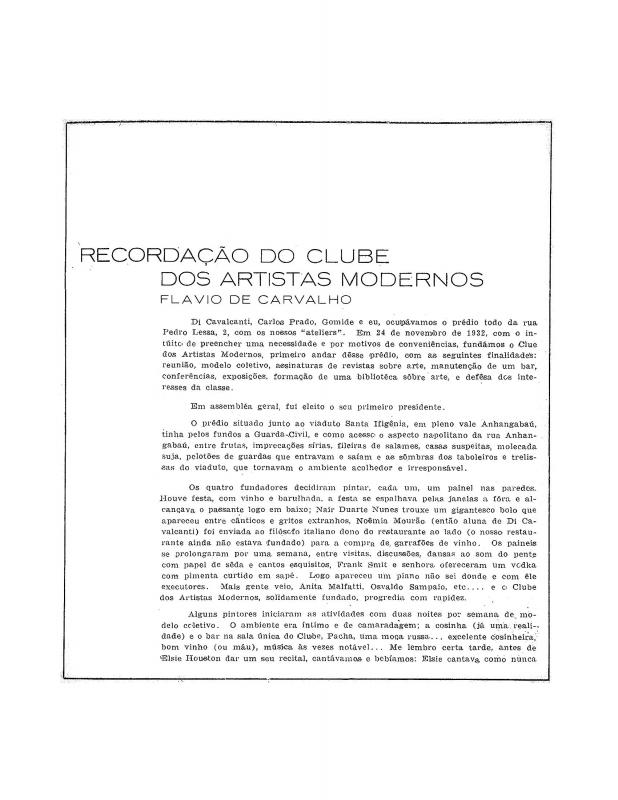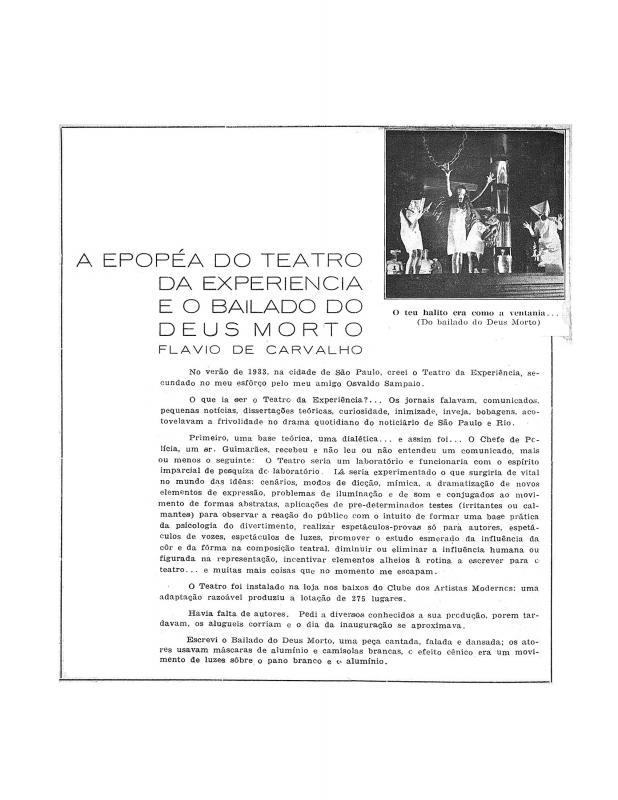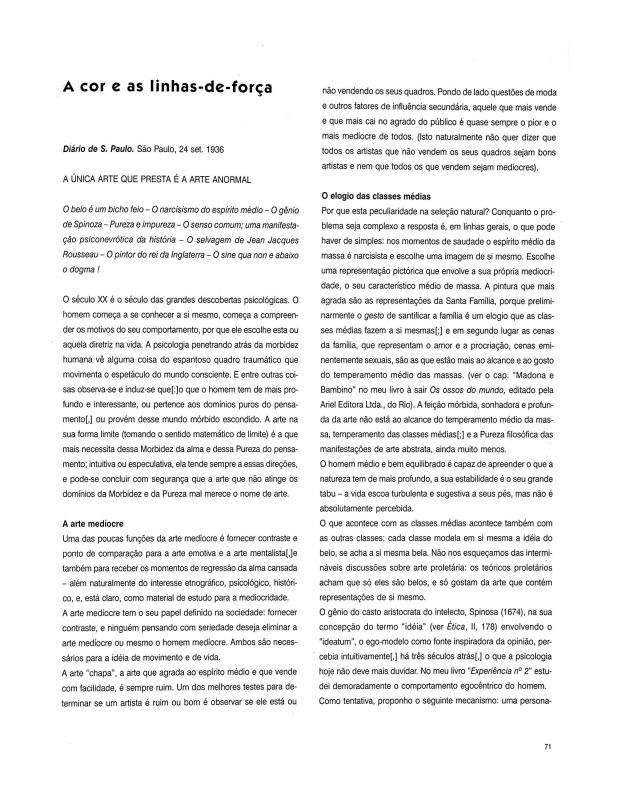The experimental concerns of Flávio de Carvalho (1899–1973) were so profound that they were felt on the institutional level. Along with painters Emiliano Di Cavalcanti, Carlos Prado, and Antonio Gomide, he founded the Club de los Artistas Modernos (CAM) in São Paulo. The initial aim of the group was to support activities that formulated a “collective model of public action” (see his text “Recordação do Clube dos Artistas Modernos” [doc. no. 781340]). Although the CAM sponsored lectures by unconventional critics such as Mário Pedrosa, Caio Prado, and David Alfaro Siqueiros, whom de Carvalho called the “muralist orator” (see “Um authentico revolucionario da pintura” [doc. no. 777225]), the organization did not satisfy de Carvalho. He radicalized his approach to urbanism with an “experimental laboratory” in CAM’s offices, where the idea of transformation was made feasible for citizens by means of theater (see “A epopéia do teatro da experiencia e o bailado do deus morto” [doc. no. 780339]).
This text on the psychological and morbid aspects of modern art is akin to the scandalous lecture de Carvalho gave at the IV Congresso Panamericano de Arquitetos held in Rio de Janeiro in 1930 (see “Uma tese curiosa: a cidade do homem nu” [doc. no. 783858]). The text “A única arte que presta é a arte anormal” [doc. no. 1084943], also by de Carvalho, complements this document insofar as it addresses the possibility of the “mental renovation” of citizens by means of urbanism. On a number of occasions, de Carvalho cites Oswald de Andrade’s “Manifesto antropófago” [doc. no. 771303], a 1928 text crucial to a number of writers from the time. The manifesto was fundamental to de Carvalho’s formulation of the “nude man.”






